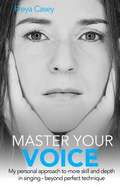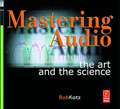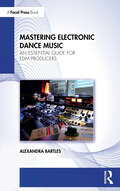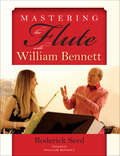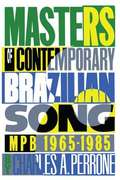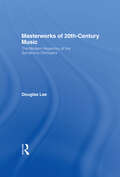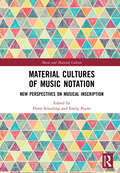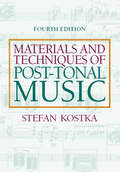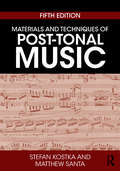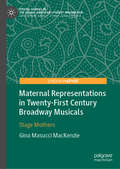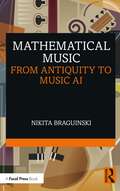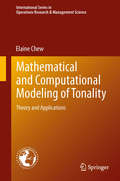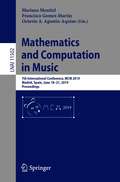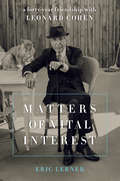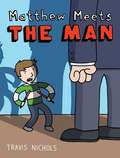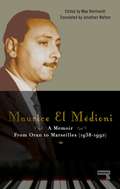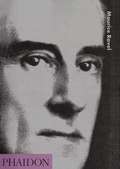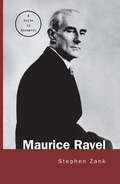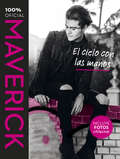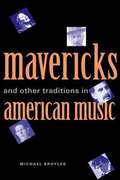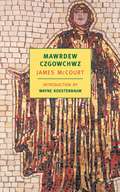- Table View
- List View
Master Your Voice: My Personal Approach to More Skill and Depth in Singing - Beyond Perfect Technique!
by Freya CaseyIf singing is your passion, you're always on the lookout for anything that can help you stay inspired and motivated on your quest to become the best singer you can possibly be. Becoming a world-class singer doesn't just mean you have a solid technique, but mastering your mind as well as your body are also key elements for success. In my personal experience of being a professional singer on stage for a few decades, having performed in opera theatre as well as cover bands all over the world, I have learned what it takes to stand out and how to find my identity as a singer. I share my story and want to help you write your own success story. No more struggles with technique, mindset, and staying on the ball! <P><P>Your voice is more than an instrument. It's a reflection of your personality, hopes, dreams, and fears. This book will help you get one step closer to finding your uniqueness as a singer and having more confidence in the beauty of your voice.
Mastering Audio: The Art and the Science
by Bob KatzMastering Audio explains leading-edge audio concepts in an easy-to-grasp, holistic manner, including an ear-opening investigation of the mysteries of jitter, dither and wordlengths, high sample rates, distortion, headroom, monitor calibration, metering, depth perception, compression and expansion, equipment interconnection and much more. Mastering Audio is for everyone who wants to increase their mastery of digital and analog audio: musicians, producers, A&R, mastering, recording and mixing engineers, and students.
Mastering Electronic Dance Music: An Essential Guide for EDM Producers
by Alexandra BartlesMastering Electronic Dance Music is a guide to the sonic considerations of EDM audio. Written by a successful Apple-approved mastering engineer, it introduces readers to all the techniques behind mastering electronic dance music (EDM).Beginning with the essentials of preparation, the book addresses the nature of mastering and the importance of listening. The chapters cover a wide range of topics including compression, EQ, saturation, metering, LUFS, and delivery formats. The book discusses all the processors involved in a mastering chain, finishing with a step-by-step guide of how they can be used, though an example of how a track by DJ Nicky Holloway was mastered. Covering plug-ins and hardware, this is an invaluable guide to mastering EDM, supported by numerous online audio examples.This is an essential reference for anyone interested in producing or mastering EDM music, offering insights for beginners taking their first steps in engineering, as well as adept producers exploring new genres, and students of music production.
Mastering the Flute with William Bennett
by Roderick SeedFor the first time the exercises and teaching methods of world-renowned flutist William Bennett are featured in one workbook. After more than a decade of study with Bennett and many of his students, Roderick Seed has documented the tools that have made Bennett known for his ability to give the flute the depth, dignity, and grandeur of the voice or the stringed instrument. Topics range from how to overcome basic technical difficulties, such as pitch control, to the tools for phrasing, prosody, tone, and intonation needed for playing with different dynamics and ranges of expression. Advanced musicians will find useful exercises and techniques in this book that will deepen their knowledge and enjoyment of making music and help them in their quest to master the flute.
Masterpieces of Music Before 1750 (Dover Books On Music: History)
by John F. Ohl Carl ParrishAnyone interested in the history and development of Western music will welcome this collection of outstanding musical examples illustrating the general course of musical style from the early Middle Ages to the mid-eighteenth century. Included are 50 carefully selected compositions of great historical importance -- each masterful and beautiful in its own right.Selections include chants, the organum, parts of masses, motets, chansons, canzonas, lute dances, madrigals, ricercari, and clavecin pieces. Among the pieces are exquisite motets by Josquin, Lassus, and Byrd; madrigals by Marenzio and Caccini; brilliant instrumental displays by Frescobaldi, Pachelbel, Couperin, and Domenico Scarlatti; choral music by Handel and Bach, and much more.Each example is accompanied by notes that identify the place of the composition in the history of music and suggest ways for the reader to undertake a useful analysis of that music. Most examples are in easy-to-follow "short score" -- i.e., in two staves, lending themselves to analysis and performance by the student singly or in informal ensembles. The music can be performed either vocally or at the keyboard, allowing the reader to gain unmatched insight into the character and significance of a rich cross-section of historic styles.
Masters of Contemporary Brazilian Song: MPB 1965-1985
by Charles A. PerroneMasters of Contemporary Brazilian Songis a critical study of MPB (música popular brasileira), a term that refers to varieties of urban popular music of the 1960s and 1970s, incorporating samba, Bossa Nova, and new materials.
Masters of Tonewood: The Hidden Art of Fine Stringed-Instrument Making
by Jeffrey GreeneThe wood used by master craftsmen to create many of the world’s legendary stringed instruments—violins and cellos, mandolins and guitars—comes from seven near-mythic European forests. In his latest book, Jeffrey Greene takes the reader into those woodlands and into luthiers’ workshops to show us how the world’s finest instruments not only contribute to great musical art but are prized works of art in themselves.Masters of Tonewood describes the "hidden life" of stringed instruments, beginning with the unique wood, expertly chosen and sometimes cured for decades, that gives them voices that rivet audiences. Greene takes us to forests in Italy, France, Switzerland, Austria, Romania, Poland, and the Czech Republic. We are introduced to the acoustical and aesthetic properties of the spruce that Stradivari treasured, and the mystery of why just one in a thousand maple trees contains decorative figuring worthy of the highest-quality instruments. Greene visits the greatest traditional centers of this craft, from Spain to the United States. He recounts the ideas and experiences of tonewood millers, luthiers, and musicians and discusses their concerns about environmental issues associated with a tradition dependent on ancient woodlands in a modern world.
Masterworks of 20th-Century Music: The Modern Repertory of the Symphony Orchestra
by Douglas Lee"Masterworks of 20th-Century Music" introduces more than one hundred of the greatest compositions by world-renowned composer that have entered the standard orchestral repertory. The author surveyed dozens of major American orchestras to focus on those works that an average audience member is most likely to hear. Concertgoers who are intimated by the modern repertoire finally have a single resource that will help them understand and enjoy it. Like an educated guide, he walks the listener through the piece, explaining how all the elements come together to form a unified whole. This book serves the general reader interested in 20th-century music, plus students, teachers, and scholars.
Match Prints
by Timothy White Jim MarhsallMatch Prints is a visual and editorial dialogue between two important photographers and longtime friends. Over the course of their twenty-year friendship, Jim Marshall and Timothy White discovered that their work often shared striking similarities despite time differences of as much as three decades. Sometimes the similarity presented itself in the form of a common pose or expression, a common prop or situation. Sometimes the photographers' subject was the same, the images taken decades apart. Marshall and White have collaborated in selecting more than fifty stunning pairings for publication for the first time in Match Prints. An introduction by renowned music writer Anthony DeCurtis compares the work of the two photographers and provides firsthand behind-the-scenes anecdotes—an entertaining, informative read that sheds light on the photographers' approach to their work and captures the essence of their enduring friendship. Also included throughout the book are first-person anecdotes from the subjects themselves on the images and their creation.Whether poignant, dramatic, hilarious, or shocking, these are powerful visual pairings by two masters of photography.
Material Cultures of Music Notation: New Perspectives on Musical Inscription (Music and Material Culture)
by Floris SchuilingMaterial Cultures of Music Notation brings together a collection of essays that explore a fundamental question in the current landscape of musicology: how can writing and reading music be understood as concrete, material practices in a wider cultural context? Drawing on interdisciplinary approaches from musicology, media studies, performance studies, and more, the chapters in this volume offer a wide array of new perspectives that foreground the materiality of music notation. From digital scores to the transmission of manuscripts in the Middle Ages, the volume deliberately disrupts boundaries of discipline, historical period, genre, and tradition, by approaching notation's materiality through four key interrelated themes: knowledge, the body, social relations, and technology. Together, the chapters capture vital new work in an essential emerging area of scholarship.
Materials and Techniques of Post Tonal Music
by Stefan KostkaThis text provides the most comprehensive analytical approach to post-tonal music available, from Impressionism to recent trends. It covers music from the early 1900s through the present day, with discussion of such movements as Minimalism and the Neoromanticism, and includes chapters on rhythm, form, electronic and computer music, and the roles of chance and choice in post-tonal music. Chapter-end exercises involve drills, analysis, composition, as well as several listening assignments.
Materials and Techniques of Post-Tonal Music
by Stefan Kostka Matthew SantaMaterials and Techniques of Post-Tonal Music, Fifth Edition provides the most comprehensive introduction to post-tonal music and its analysis available. Covering music from the end of the nineteenth century through the beginning of the twenty-first, it offers students a clear guide to understanding the diverse and innovative compositional strategies that emerged in the post-tonal era, from Impressionism to computer music. This updated fifth edition features: chapters revised throughout to include new examples from recent music and insights from the latest scholarship; the introduction of several new concepts and topics, including parsimonius voice-leading, scalar transformations, the New Complexity, and set theory in less chromatic contexts; expanded discussions of spectralism and electronic music; timelines in each chapter, grounding the music discussed in its chronological context; a companion website that provides students with links to recordings of musical examples discussed in the text and provides instructors with an instructor’s manual that covers all of the exercises in each chapter. Offering accessible explanations of complex concepts, Materials and Techniques of Post-Tonal Music, Fifth Edition is an essential text for all students of post-tonal music theory.
Maternal Representations in Twenty-First Century Broadway Musicals: Stage Mothers (Pivotal Studies in the Global American Literary Imagination)
by Gina Masucci MacKenzieMaternal Representations in Twenty-First Century Broadway Musicals: Stage Mothers analyzes Broadway productions within the context of their presentation and assessment of motherhood and the variety of roles for mother figures. Using a frame of feminist and psychoanalytical positions, Gina MacKenzie establishes, defines, and interprets mother figures in contemporary Broadway, according to original categorizations of the absent, inconsequential, and overbearing mothers. MacKenzie considers how and why commercial representation of mother figures are limited and predominantly negative, even as fiction, poetry, and other forms of drama offer a much wider and progressive view of the varieties of motherhood possible in society, asserting the need for greater representation of mother figures in commercial musical theatre today.
Mathematical Music: From Antiquity to Music AI
by Nikita BraguinskiMathematical Music offers a concise and easily accessible history of how mathematics was used to create music. The story presented in this short, engaging volume ranges from ratios in antiquity to random combinations in the 17th century, 20th-century statistics, and contemporary artificial intelligence. This book provides a fascinating panorama of the gradual mechanization of thought processes involved in the creation of music. How did Baroque authors envision a composition system based on combinatorics? What was it like to create musical algorithms at the beginning of the 20th century, before the computer became a reality? And how does this all explain today’s use of artificial intelligence and machine learning in music? In addition to discussing the history and the present state of mathematical music, Braguinski also takes a look at what possibilities the near future of music AI might hold for listeners, musicians, and the society. Grounded in research findings from musicology and the history of technology, and written for the non-specialist general audience, this book helps both student and professional readers to make sense of today’s music AI by situating it in a continuous historical context.
Mathematical and Computational Modeling of Tonality
by Elaine ChewFrom the Preface: Blending ideas from operations research, music psychology, music theory, and cognitive science, this book aims to tell a coherent story of how tonality pervades our experience, and hence our models, of music. The story is told through the developmental stages of the Spiral Array model for tonality, a geometric model designed to incorporate and represent principles of tonal cognition, thereby lending itself to practical applications of tonal recognition, segmentation, and visualization. Mathematically speaking, the coils that make up the Spiral Array model are in effect helices, a spiral referring to a curve emanating from a central point. The use of "spiral" here is inspired by spiral staircases, intertwined spiral staircases: nested double helices within an outer spiral. The book serves as a compilation of knowledge about the Spiral Array model and its applications, and is written for a broad audience, ranging from the layperson interested in music, mathematics, and computing to the music scientist-engineer interested in computational approaches to music representation and analysis, from the music-mathematical and computational sciences student interested in learning about tonality from a formal modeling standpoint to the computer musician interested in applying these technologies in interactive composition and performance. Some chapters assume no musical or technical knowledge, and some are more musically or computationally involved.
Mathematics and Computation in Music: 7th International Conference, MCM 2019, Madrid, Spain, June 18–21, 2019, Proceedings (Lecture Notes in Computer Science #11502)
by Octavio A. Agustín-Aquino Mariana Montiel Francisco Gomez-MartinThis book constitutes the thoroughly refereed proceedings of the 7th International Conference on Mathematics and Computation in Music, MCM 2019, held in Madrid, Spain, in June 2019. The 22 full papers and 10 short papers presented were carefully reviewed and selected from 48 submissions. The papers feature research that combines mathematics or computation with music theory, music analysis, composition, and performance. They are organized in topical sections on algebraic and other abstract mathematical approaches to understanding musical objects; remanaging Riemann: mathematical music theory as “experimental philosophy”?; octave division; computer-based approaches to composition and score structuring; models for music cognition and beat tracking; pedagogy of mathematical music theory.The chapter “Distant Neighbors and Interscalar Contiguities” is available open access under a Creative Commons Attribution 4.0 International License via link.springer.com.
Matters of Vital Interest: A Forty-Year Friendship with Leonard Cohen
by Eric LernerA memoir of the author's decades-long friendship and spiritual journey with the late singer, songwriter, novelist, and poet Leonard CohenLeonard Cohen passed away in late 2016, leaving behind many who cared for and admired him, but perhaps few knew him better than longtime friend Eric Lerner. Lerner, a screenwriter and novelist, first met Cohen at a Zen retreat forty years earlier. Their friendship helped guide each other through life's myriad obstacles, a journey told from a new perspective for the first time.Funny, revealing, self-aware, and deeply moving, Matters of Vital Interest is an insightful memoir about Lerner's relationship with his friend, whose idiosyncratic style and dignified life was deeply informed by his spiritual practices. Lerner invites readers to step into the room with them and listen in on a lifetime's ongoing dialogue, considerations of matters of vital interest, spiritual, mundane, and profane. In telling their story, Lerner depicts Leonard Cohen as a captivating persona, the likes of which we may never see again.
Matthew Meets the Man
by Travis NicholsMatthew Swanbeck has a classic problem. Back in seventh grade, his dad talked him into playing the trumpet instead of the drums. Now he's a lowly brass player in the school marching band. Until one day he has an epiphany: He can start his own band, play in all the cool rock venues, even go on tour . . . if only he can scrape together the cash to buy a drum set. But how will he ever get the money together when The Man thwarts him at every turn, taking taxes out of his paycheck, forcing him to mow the lawn for a measly $10 a week, and creating all of those rules that get in the way of dreams? It's one teen against the system in this light-hearted look at the challenges and rewards of chasing your dreams.
Maud Powell, Pioneer American Violinist
by Karen A. Shaffer Neva G. GreenwoodBiography of the first American violinist to gain international rank.
Maurice El Médioni - A Memoir: From Oran to Marseilles (1936-1990)
by Jonathan Walton Maurice El Médioni Max ReinhardtUndoubtedly great music outlives the musicians who create it. But octogenarian greats such as John Lee Hooker or Cuba's Buena Vista Social Club outlive the initial popularity of their musical genre and then decades later it is their late careers that make the music live on and catch fire to new generations, audiences and markets across the globe, as musical currents and tides, like the 1960's UK blues boom or the 1990's (and still continuing) world music phenomenon, work their unpredictable magic.The Algerian Jewish master of PianOriental, Maurice El Médioni, will turn 88 this year. His innovative piano style, indomitable spirit and the turbulent panorama of his long career in Algerian chaabi and rai music has followed a similar trajectory. The music should have stopped or at least petered out several times for personal, political and historic reasons. But instead he has become a revered and iconic artist in world music, though in fact even 20 years ago he was largely a forgotten and unknown figure.
Maurice Ravel (20TH-CENTURY COMPOSERS)
by Gerald LarnerFrom the Pavane pour une Infante défunte to Boléro, much of the music of Maurice Ravel (1875-1937) is among the most accessible of any written during the last hundred years. The man, however, was notoriously difficult to get to know, partly because of his inherent reserve and partly because he concealed aspects of his character even from his closest friends. The author aims to trace the development of the composer's personality not only through events in his life and in the society around him but also through his music, which is more revealing in this respect than is generally believed. Ravel tended to reveal most of himself at times of crisis, such as the outbreak of World War I, and the death of his adored mother in 1917. 'Adversity', the chapter devoted to those years, is a central feature in a book which begins by evaluating the importance of Ravel's mixed Basque and Swiss heredity and then pursues the first part of his life through his childhood in Bohemian Montmartre, his controversial activities as a student at the Paris Conservatoire, and the establishment of his career as a composer fascinatingly interlinked with that of his older contemporary Claude Debussy. A moving description of his war service as a truck driver is followed by an account of the slow recovery from the failure in his health and morale after his mother's death, the period of conflict and reconciliation with the post-war movement represented by Erik Satie and Les Six, and a last decade of international celebrity coinciding with the gradual onset of the illness which silenced him four years before his death.
Maurice Ravel: A Guide to Research (Routledge Music Bibliographies)
by Stephen ZankMaurice Ravel: A Research and Information Guide is an annotated bibliography concerning both the nature of primary sources related to the composer and the scope and significance of the secondary sources which deal with him, his compositions, and his influence as a composer and theorist.
Maverick. El cielo con las manos
by Maverick LópezUn libro que recoge toda la historia de Maverick, el artista revelación que está conquistando escenarios y corazones. Un libro dedicado a l@s Mavers, porque sin ell@s nada de esto sería posible, en el que el cantante comparte sus experiencias y fotos más personales. «Si tuviera que definirme con un lema, creo que sería que, antes que artista o cualquier otra cosa, hay que ser persona. Y sí, ahora soy Maverick, un cantante famoso, finalista de La Voz, con un disco en el mercado y con miles de seguidores en redes sociales. Pero también sigo siendo Mave, o Mav, como me llaman mi familia y mis amigos, aquel chico que salió con dieciséis años de Vinaròs con una maleta en la que lo que más pesaba era su ilusión de cumplir un sueño.»Maverick López Con 20 años recién cumplidos, la voz de Maverick ha cautivado a miles de personas tras su paso por la tercera edición de La Voz yla joven promesa de la música española está tocando el cielo con las manos. Pero, detrás del éxito, hay una historia de esfuerzo, de tropiezos y de superación que él mismo ha querido contarnos en primera persona. Maverick. El cielo con las manos es un libro muy personal e íntimo en el que el joven cantante nos abre de par en par las puertas de su vida y nos habla de los pasos que le han llevado a poder dedicarse a la música, de sus ilusiones y sus sueños y de sus planes de futuro. Pero también nos abre las puertas de su corazón: su familia, sus amigos, sus primeros amores, sus aficiones, sus gustos...
Mavericks and Other Traditions in American Music
by Michael BroylesFrom colonial times to the present, American composers have lived on the fringes of society and defined themselves in large part as outsiders. In this stimulating book Michael Broyles considers the tradition of maverick composers and explores what these mavericks reveal about American attitudes toward the arts and about American society itself. Broyles starts by examining the careers of three notably unconventional composers: William Billings in the eighteenth century, Anthony Philip Heinrich in the nineteenth, and Charles Ives in the twentieth. All three had unusual lives, wrote music that many considered incomprehensible, and are now recognized as key figures in the development of American music. Broyles goes on to investigate the proliferation of eccentric individualism in all types of American music--classical, popular, and jazz--and how it has come to dominate the image of diverse creative artists from John Cage to Frank Zappa. The history of the maverick tradition, Broyles shows, has much to tell us about the role of music in American culture and the tension between individualism and community in the American consciousness.
Mawrdew Czgowchwz: Some Divisions Of The Saga Of Mawrdew Czgowchwz, Oltrano, Authenticated By Persons Represented There
by James Mccourt Wayne KoestenbaumDiva Mawrdew Czgowchwz (pronounced "Mardu Gorgeous") bursts like the most brilliant of comets onto the international opera scene, only to confront the deadly malice and black magic of her rivals. Outrageous and uproarious, flamboyant and serious as only the most perfect frivolity can be, James McCourt's entrancing send-up of the world of opera has been a cult classic for more than a quarter-century. This comic tribute to the love of art is a triumph of art and love by a contemporary American master.
